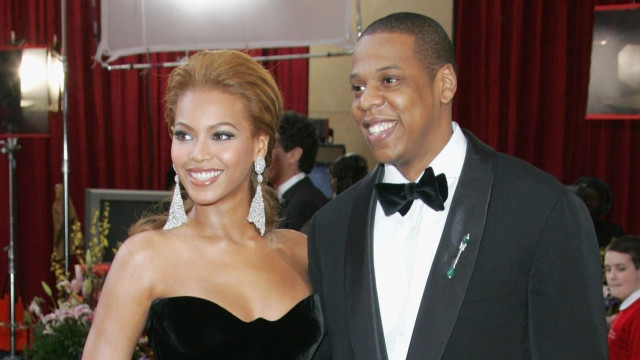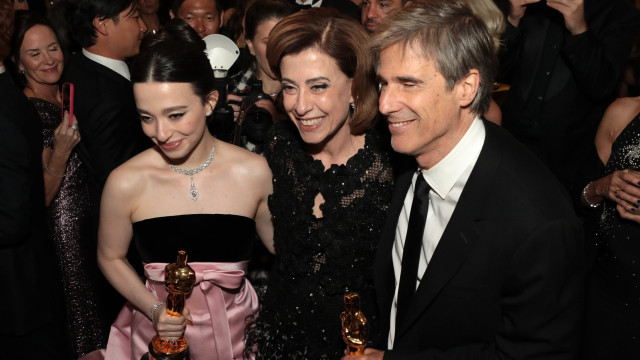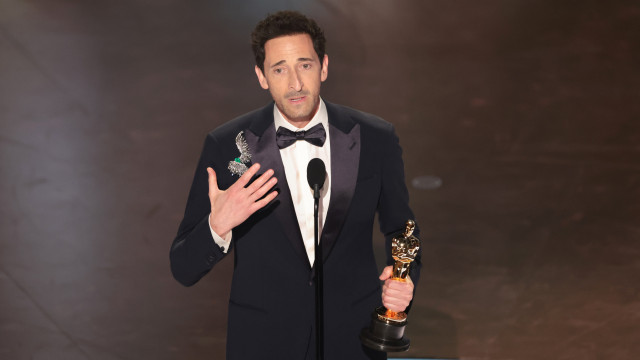



























© Getty Images
0 / 28 Fotos
Who was Coco Chanel?
- Coco Chanel was a French fashion designer famous for her elegantly casual designs that encouraged women to abandon the uncomfortable, complicated clothes that were prevalent in the early 20th century.
© Getty Images
1 / 28 Fotos
Birth
- Coco Chanel was born Gabrielle Bonheur Chanel, although her surname was misspelled as Chasnel on her birth certificate.
© Getty Images
2 / 28 Fotos
Birth
- Coco Chanel was born on August 19, 1883, in Saumur, France, to parents Eugénie Jeanne Devolle Chanel, a laundrywoman, and Albert Chanel, a street vendor.
© Getty Images
3 / 28 Fotos
Sent to an orphanage
- Chanel lived in poverty with her family, which eventually included six children. After her mother died in 1895, Chanel was sent to a convent-run orphanage in Aubazine, France. It was there that she learned to sew.
© Getty Images
4 / 28 Fotos
The move to Moulins
- When Chanel turned 18, she moved to Moulins, where she attended school while living in a convent.
© Getty Images
5 / 28 Fotos
Working as a café singer
- In 1902, she became a seamstress and also worked as a café singer. While the origin of her nickname Coco isn't confirmed, some believe it is a reference to the songs she performed, such as “Ko Ko Ri Ko” (“Cock-a-doodle-doo”).
© Getty Images
6 / 28 Fotos
Relationships
- Chanel had affairs with various wealthy men, notably Arthur Capel. With his financial assistance, she opened Chanel Modes, a small millinery shop in Paris, in 1910.
© Getty Images
7 / 28 Fotos
Deauville boutique
- In 1912, Chanel established a boutique in Deauville, France. She sold sweaters made of jersey, an inexpensive fabric that she turned into practical but elegant designs.
© Getty Images
8 / 28 Fotos
"Luxury must be comfortable, otherwise it is not luxury"
- Chanel's simple yet elegant designs offered influential, wealthy women a much-needed alternative to restrictive corsets, ultimately revolutionizing the fashion industry.
© Getty Images
9 / 28 Fotos
The little black dress
- In 1926, Chanel introduced the little black dress. The color was commonly reserved for mourning or more formal attire, while Chanel's black dress was versatile and could transition from day to night with the right accessories.
© Getty Images
10 / 28 Fotos
Chanel No. 5
- In 1921, with the help of Ernest Beaux, one of the most talented perfume creators in France, she developed her Chanel No. 5 perfume. Some say the name came from her choosing the fifth scent of the perfume, while others say it's because five was her lucky number.
© Getty Images
11 / 28 Fotos
World War II
- During the outbreak of World War II, Chanel was living at the Ritz Paris hotel, which became Nazi headquarters after Germany occupied France.
© Getty Images
12 / 28 Fotos
Chanel's relationship with Baron Hans Günther von Dincklage
- During her time at the Ritz Paris hotel, she began a romantic relationship with Baron Hans Günther von Dincklage, a German diplomat and Gestapo spy.
© Getty Images
13 / 28 Fotos
Calling in favors
- Hans Günther von Dincklage and his Nazi contacts were able to get Chanel's nephew, a member of the French army, released from a German prison camp.
© Getty Images
14 / 28 Fotos
Operation Modelhut
- Chanel was involved in Operation Modelhut, a scheme in which a Nazi general enlisted Chanel to travel to Madrid in the hopes of getting a message to her friend Winston Churchill, suggesting they negotiate an end to the war.
© Getty Images
15 / 28 Fotos
Westminster
- During Operation Modelhut, Chanel's code name was Westminster, a nod to her connections to Britain and her decade-long affair with the Duke of Westminster.
© Getty Images
16 / 28 Fotos
Anti-Semitism
- Chanel attempted to use the Nazi's Aryan laws preventing Jews from owning businesses to take control of her perfume company from her Jewish partners.
© Getty Images
17 / 28 Fotos
Arrest
- After the Nazi occupation ended in 1944, Chanel was arrested by French authorities. However, no charges were brought. Historians widely assume Prime Minister Winston Churchill, a longtime friend, intervened.
© Getty Images
18 / 28 Fotos
Move to Switzerland
- Chanel left for Switzerland to escape any retribution and stayed for nearly a decade. She continued her relationship with Hans Günther von Dincklage for years after the war and never faced any official consequences for her wartime activities.
© Getty Images
19 / 28 Fotos
War crime trial
- In 1949, Chanel was asked to appear before the war crime trial of Baron Louis de Vaufreland, a former associate who claimed that she had been involved in a Nazi operation. She denied the accusations.
© Getty Images
20 / 28 Fotos
A return to fashion?
- In the early 1950s, Chanel began to consider a return to fashion. French fashion had undergone a major change, led by Christian Dior. He created the New Look, a style defined by ultrafeminine and highly sculptured clothing.
© Getty Images
21 / 28 Fotos
1954 fashion show
- In 1954, Chanel staged her first fashion show in 15 years, and the collection proved popular in the United States. By the end of the 50's, she debuted the iconic Chanel quilted purse with gold chains.
© Getty Images
22 / 28 Fotos
1954 fashion show
- Chanel's collection featured in the 1954 fashion show earned her place in history, ensuring her name would be remembered as a fashion icon.
© Getty Images
23 / 28 Fotos
An opportunist?
- Hal Vaughan, the author of 'Sleeping with the Enemy,' said Coco Chanel believed in putting herself first: "Chanel was, very simply put, an enormous opportunist who did what she had to do to get along."
© Getty Images
24 / 28 Fotos
Legacy
- Chanel's collaboration may have tarnished her legacy, but she is still celebrated as one of the most influential designers of the 20th century. Even in more recent years, acclaimed designers are still making successful comebacks after outrageous scandals. John Galliano, whose career parallels Chanel's, is a perfect example.
© Getty Images
25 / 28 Fotos
John Galliano
- Galliano lost his job as creative director of the House of Dior in 2011 after videos surfaced of him yelling anti-Semitic slurs. Despite this, he made a comeback and received glowing reviews for his show for Maison Margiela in early 2024.
© Getty Images
26 / 28 Fotos
Death
- Coco Chanel died in her suite at the Hotel Ritz on January 10, 1971. Her last words to her maid Celine were, "You see, this is how you die." Sources: (BBC) (Britannica) (Business Insider)
© Getty Images
27 / 28 Fotos
© Getty Images
0 / 28 Fotos
Who was Coco Chanel?
- Coco Chanel was a French fashion designer famous for her elegantly casual designs that encouraged women to abandon the uncomfortable, complicated clothes that were prevalent in the early 20th century.
© Getty Images
1 / 28 Fotos
Birth
- Coco Chanel was born Gabrielle Bonheur Chanel, although her surname was misspelled as Chasnel on her birth certificate.
© Getty Images
2 / 28 Fotos
Birth
- Coco Chanel was born on August 19, 1883, in Saumur, France, to parents Eugénie Jeanne Devolle Chanel, a laundrywoman, and Albert Chanel, a street vendor.
© Getty Images
3 / 28 Fotos
Sent to an orphanage
- Chanel lived in poverty with her family, which eventually included six children. After her mother died in 1895, Chanel was sent to a convent-run orphanage in Aubazine, France. It was there that she learned to sew.
© Getty Images
4 / 28 Fotos
The move to Moulins
- When Chanel turned 18, she moved to Moulins, where she attended school while living in a convent.
© Getty Images
5 / 28 Fotos
Working as a café singer
- In 1902, she became a seamstress and also worked as a café singer. While the origin of her nickname Coco isn't confirmed, some believe it is a reference to the songs she performed, such as “Ko Ko Ri Ko” (“Cock-a-doodle-doo”).
© Getty Images
6 / 28 Fotos
Relationships
- Chanel had affairs with various wealthy men, notably Arthur Capel. With his financial assistance, she opened Chanel Modes, a small millinery shop in Paris, in 1910.
© Getty Images
7 / 28 Fotos
Deauville boutique
- In 1912, Chanel established a boutique in Deauville, France. She sold sweaters made of jersey, an inexpensive fabric that she turned into practical but elegant designs.
© Getty Images
8 / 28 Fotos
"Luxury must be comfortable, otherwise it is not luxury"
- Chanel's simple yet elegant designs offered influential, wealthy women a much-needed alternative to restrictive corsets, ultimately revolutionizing the fashion industry.
© Getty Images
9 / 28 Fotos
The little black dress
- In 1926, Chanel introduced the little black dress. The color was commonly reserved for mourning or more formal attire, while Chanel's black dress was versatile and could transition from day to night with the right accessories.
© Getty Images
10 / 28 Fotos
Chanel No. 5
- In 1921, with the help of Ernest Beaux, one of the most talented perfume creators in France, she developed her Chanel No. 5 perfume. Some say the name came from her choosing the fifth scent of the perfume, while others say it's because five was her lucky number.
© Getty Images
11 / 28 Fotos
World War II
- During the outbreak of World War II, Chanel was living at the Ritz Paris hotel, which became Nazi headquarters after Germany occupied France.
© Getty Images
12 / 28 Fotos
Chanel's relationship with Baron Hans Günther von Dincklage
- During her time at the Ritz Paris hotel, she began a romantic relationship with Baron Hans Günther von Dincklage, a German diplomat and Gestapo spy.
© Getty Images
13 / 28 Fotos
Calling in favors
- Hans Günther von Dincklage and his Nazi contacts were able to get Chanel's nephew, a member of the French army, released from a German prison camp.
© Getty Images
14 / 28 Fotos
Operation Modelhut
- Chanel was involved in Operation Modelhut, a scheme in which a Nazi general enlisted Chanel to travel to Madrid in the hopes of getting a message to her friend Winston Churchill, suggesting they negotiate an end to the war.
© Getty Images
15 / 28 Fotos
Westminster
- During Operation Modelhut, Chanel's code name was Westminster, a nod to her connections to Britain and her decade-long affair with the Duke of Westminster.
© Getty Images
16 / 28 Fotos
Anti-Semitism
- Chanel attempted to use the Nazi's Aryan laws preventing Jews from owning businesses to take control of her perfume company from her Jewish partners.
© Getty Images
17 / 28 Fotos
Arrest
- After the Nazi occupation ended in 1944, Chanel was arrested by French authorities. However, no charges were brought. Historians widely assume Prime Minister Winston Churchill, a longtime friend, intervened.
© Getty Images
18 / 28 Fotos
Move to Switzerland
- Chanel left for Switzerland to escape any retribution and stayed for nearly a decade. She continued her relationship with Hans Günther von Dincklage for years after the war and never faced any official consequences for her wartime activities.
© Getty Images
19 / 28 Fotos
War crime trial
- In 1949, Chanel was asked to appear before the war crime trial of Baron Louis de Vaufreland, a former associate who claimed that she had been involved in a Nazi operation. She denied the accusations.
© Getty Images
20 / 28 Fotos
A return to fashion?
- In the early 1950s, Chanel began to consider a return to fashion. French fashion had undergone a major change, led by Christian Dior. He created the New Look, a style defined by ultrafeminine and highly sculptured clothing.
© Getty Images
21 / 28 Fotos
1954 fashion show
- In 1954, Chanel staged her first fashion show in 15 years, and the collection proved popular in the United States. By the end of the 50's, she debuted the iconic Chanel quilted purse with gold chains.
© Getty Images
22 / 28 Fotos
1954 fashion show
- Chanel's collection featured in the 1954 fashion show earned her place in history, ensuring her name would be remembered as a fashion icon.
© Getty Images
23 / 28 Fotos
An opportunist?
- Hal Vaughan, the author of 'Sleeping with the Enemy,' said Coco Chanel believed in putting herself first: "Chanel was, very simply put, an enormous opportunist who did what she had to do to get along."
© Getty Images
24 / 28 Fotos
Legacy
- Chanel's collaboration may have tarnished her legacy, but she is still celebrated as one of the most influential designers of the 20th century. Even in more recent years, acclaimed designers are still making successful comebacks after outrageous scandals. John Galliano, whose career parallels Chanel's, is a perfect example.
© Getty Images
25 / 28 Fotos
John Galliano
- Galliano lost his job as creative director of the House of Dior in 2011 after videos surfaced of him yelling anti-Semitic slurs. Despite this, he made a comeback and received glowing reviews for his show for Maison Margiela in early 2024.
© Getty Images
26 / 28 Fotos
Death
- Coco Chanel died in her suite at the Hotel Ritz on January 10, 1971. Her last words to her maid Celine were, "You see, this is how you die." Sources: (BBC) (Britannica) (Business Insider)
© Getty Images
27 / 28 Fotos
Was Coco Chanel a spy?
Did the famous fashion designer rub shoulders with Nazis?
© Getty Images
Coco Chanel, born Gabrielle Bonheur Chanel, is one of the most famous fashion designers of all time. Historians ascribe the origins of the little black dress to Chanel and her unmistakable Chanel No. 5 perfume is reported to sell approximately 10 million bottles each year. While the designer revolutionized women's fashion, there's a scandalous side to her that's often overlooked: she was also an alleged Nazi sympathizer and informer.
Want to know more? Click through this gallery now to learn about Coco Chanel's controversial past.
RECOMMENDED FOR YOU












MOST READ
- Last Hour
- Last Day
- Last Week








